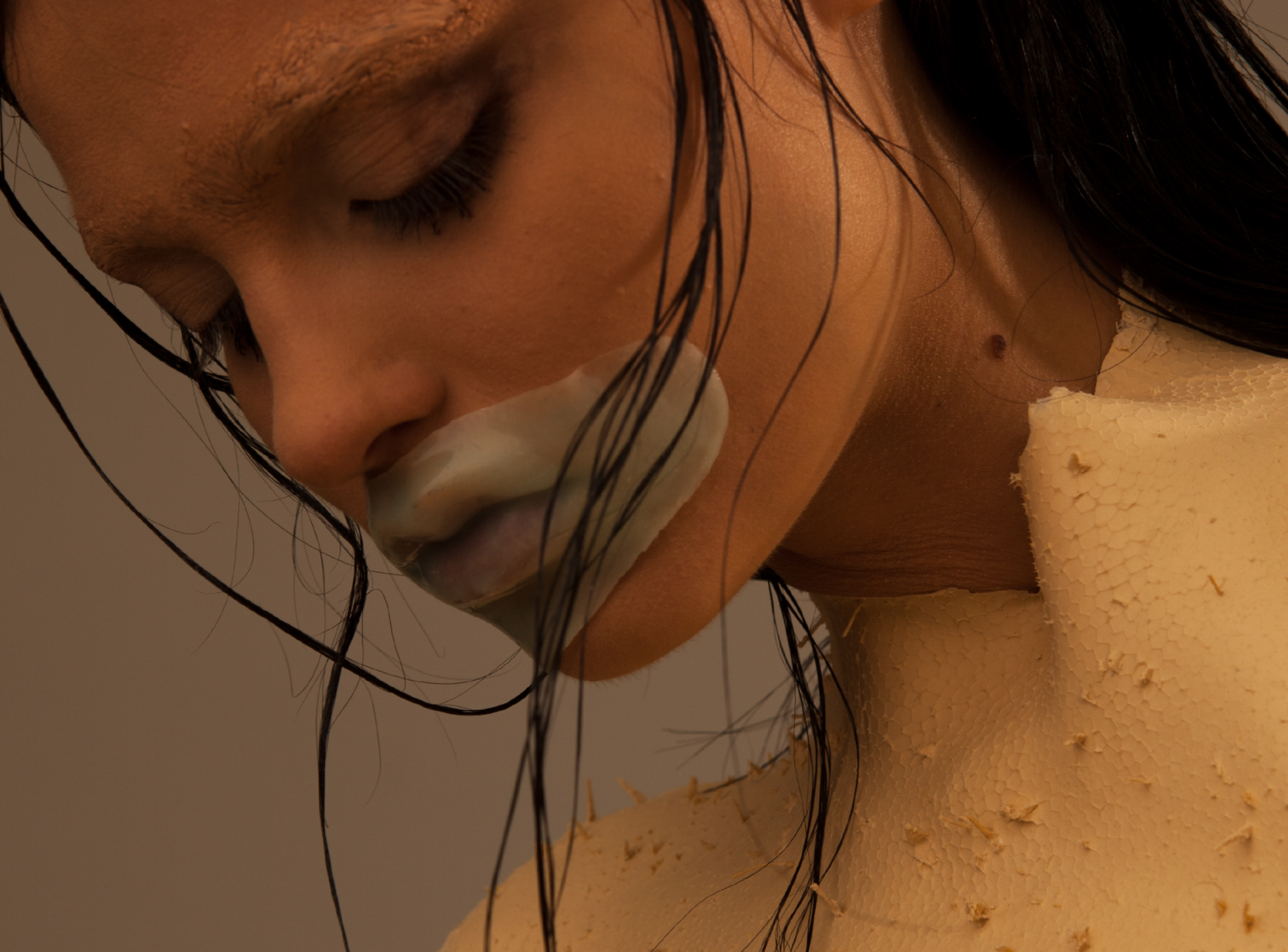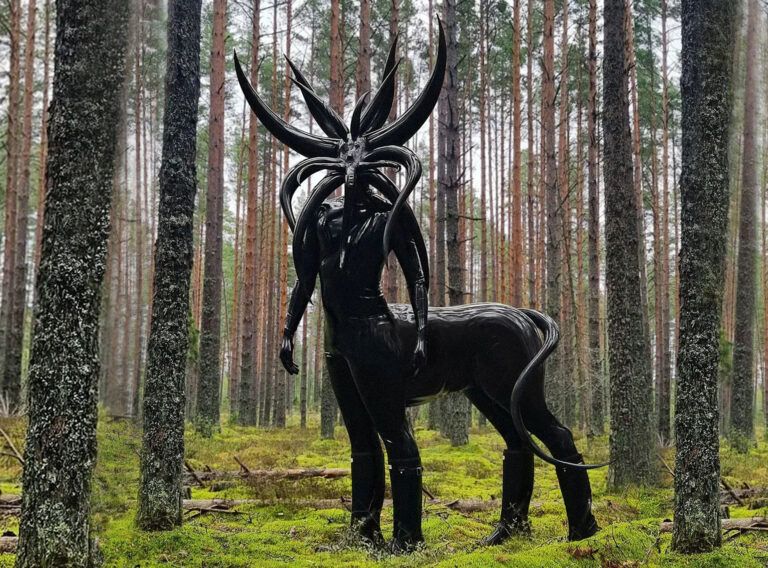Is Joanna a fashion designer, an artist, or both?
I’m still searching for an answer to this question. A part of me is a fashion designer but I try to constantly push my boundaries and explore my creative ways of expression. I think that in order to call yourself an artist you have to first drop the idea of being labelled as one, drop everything you knew so far and each time start your creative journey with no attachment, no expectations whether your work will be perceived as art or not.
What were the key pillars in your life that led you to fashion design?
One of them was my childhood which was very difficult and challenging. It shaped me in a way that I can see things from different perspective and I approach them in my own way, the way only I can understand.
Another one was a massive support I received from my sister and my partner on my creative journey.
NASTY COLLECTION
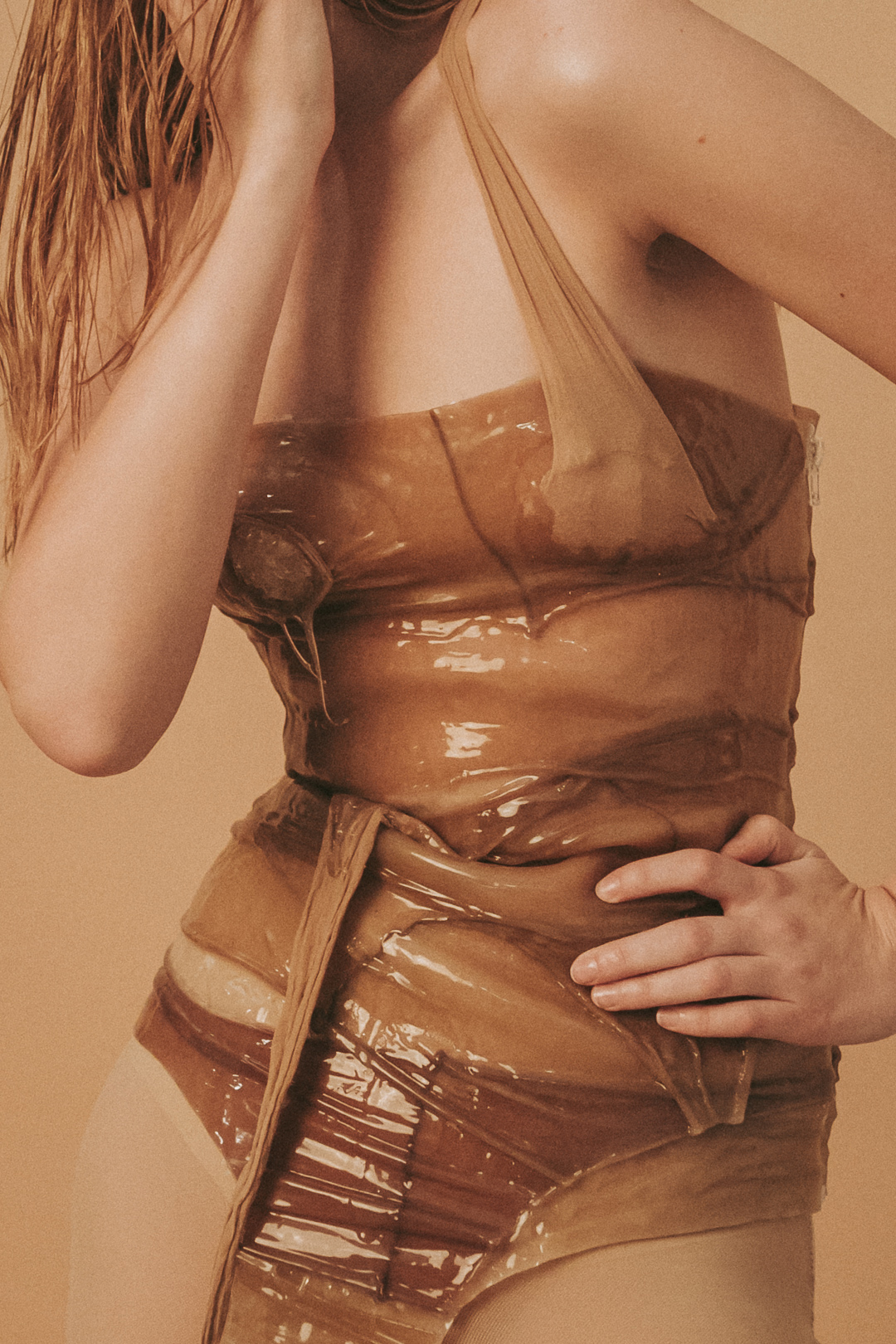

What is your approach towards the body and the current ideal of the female form when you design the collections?
I make gender fluid fashion and even though I develop my designs from a female form the collections don’t aim to fit female only.
My approach to the body has changed recently a lot and my designs are also becoming more size inclusive. I’m happy with the fact that they can be worn by different bodies and I can customize them to respond to the needs of wider audience.
RHIZOME COLLECTION
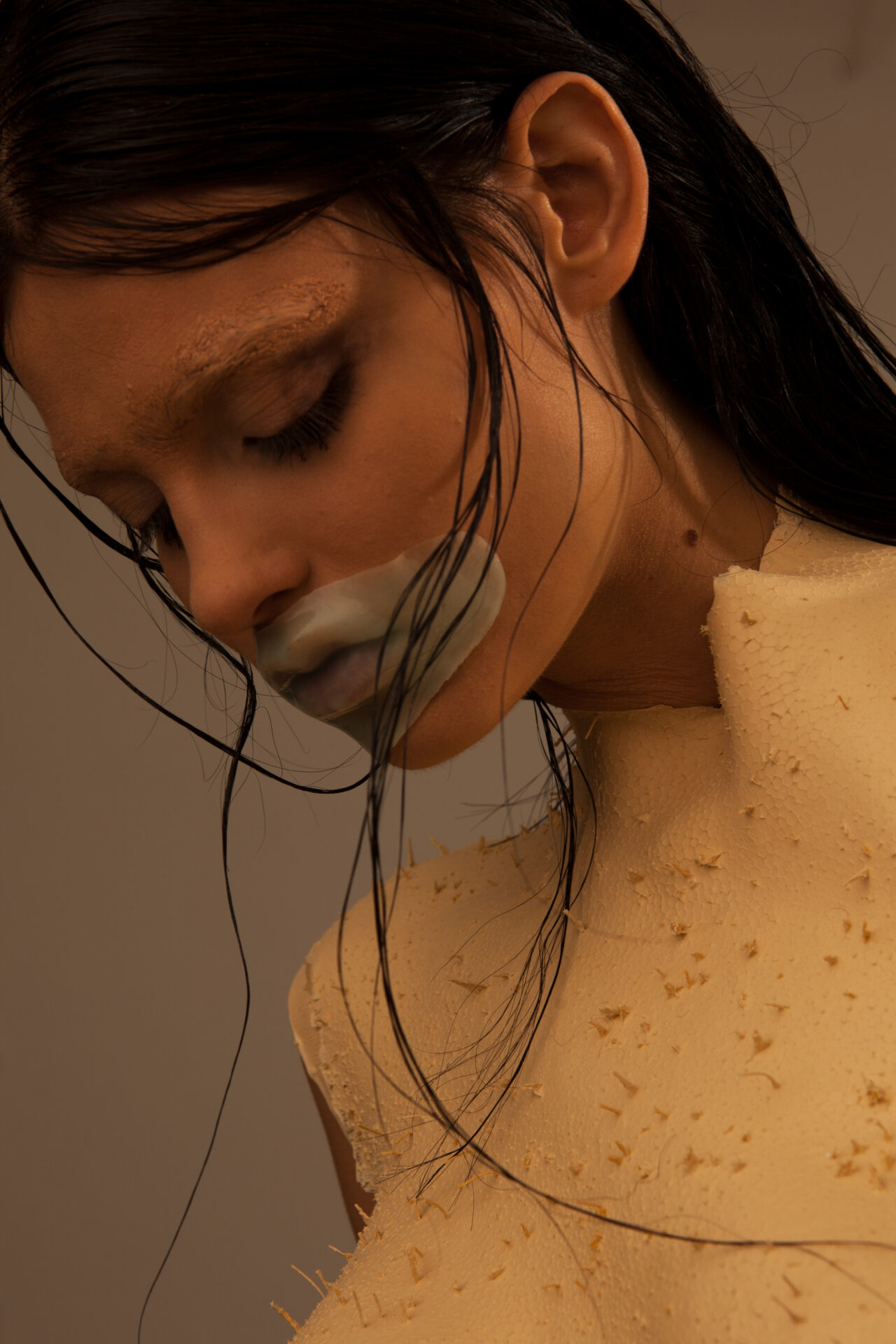
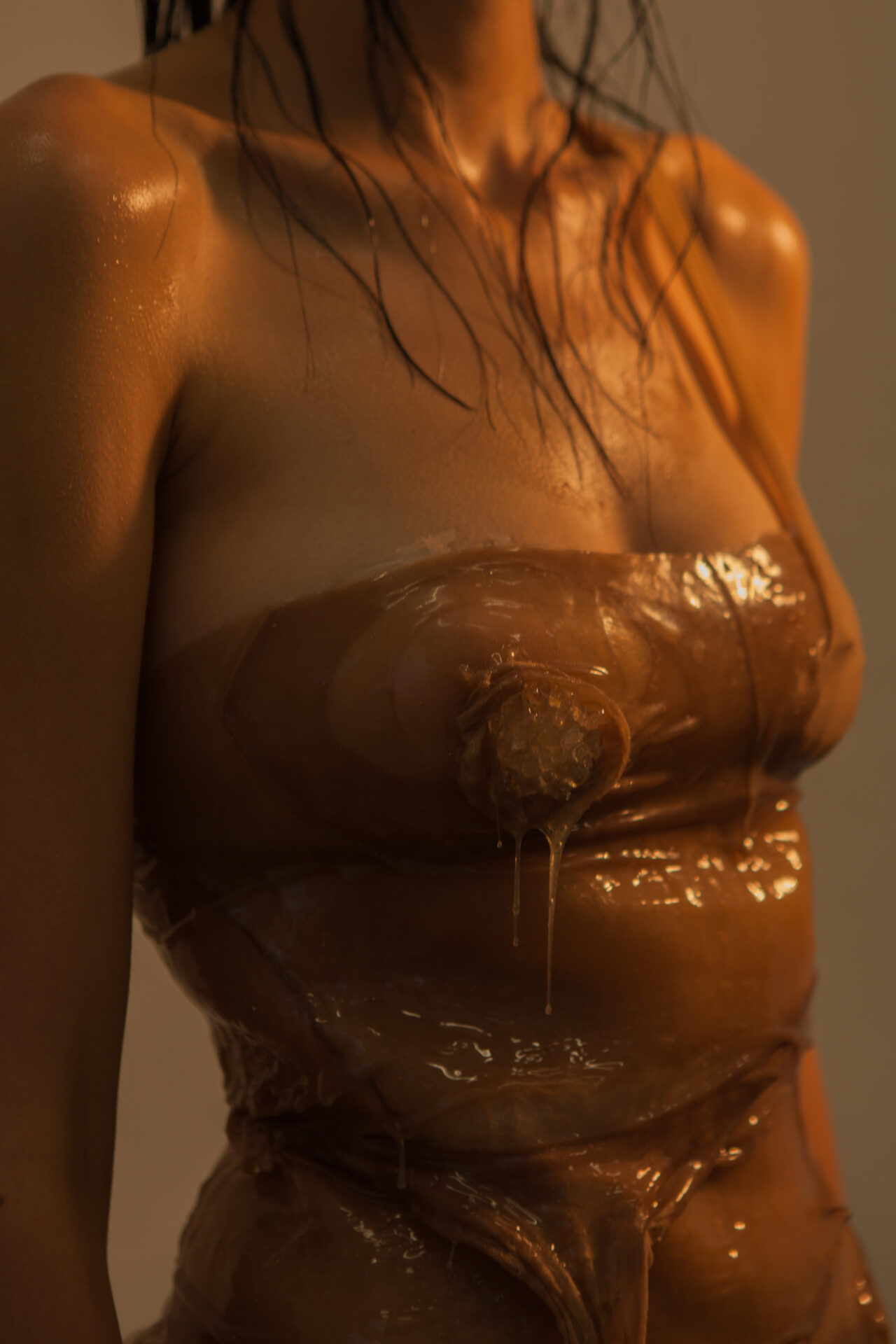
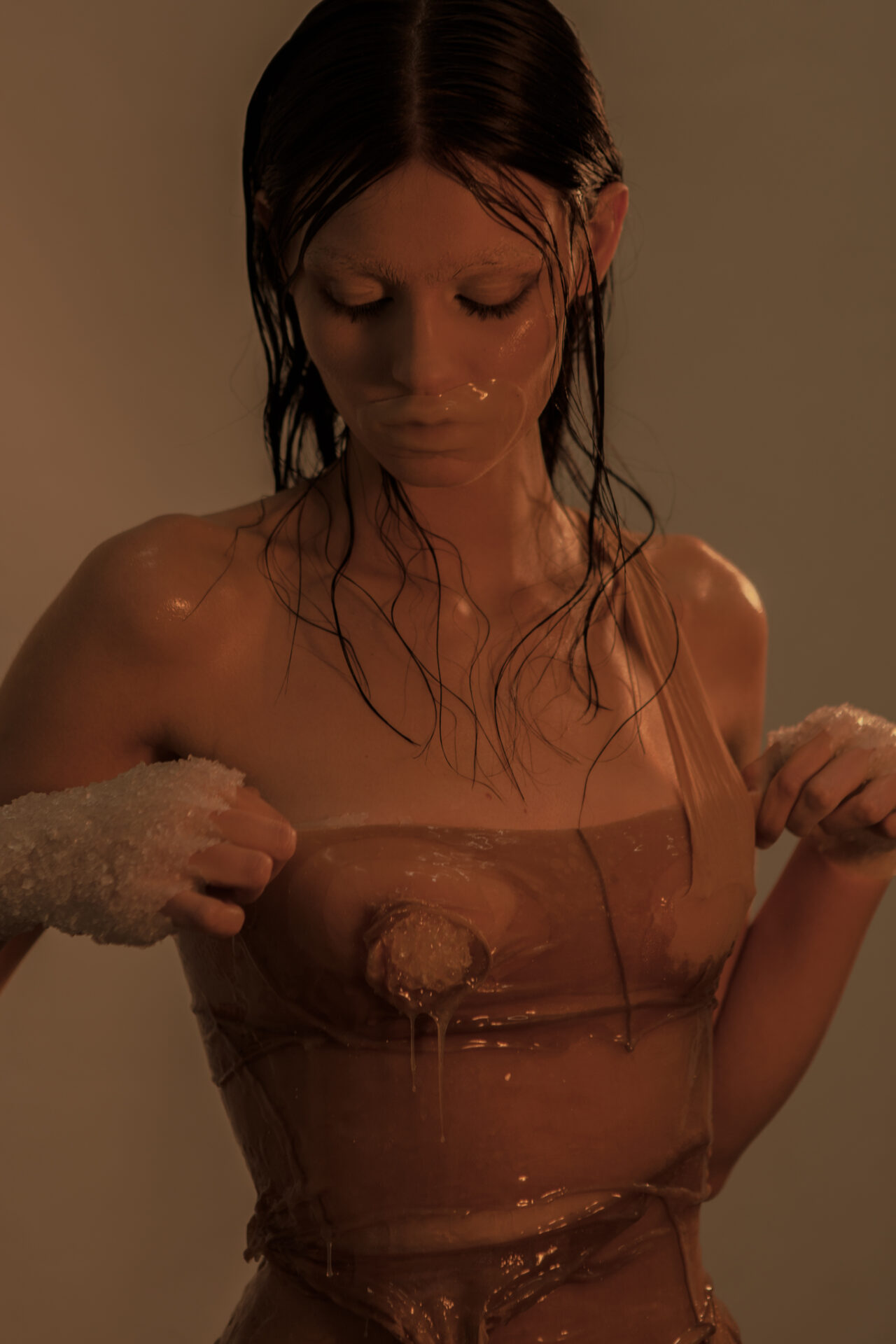
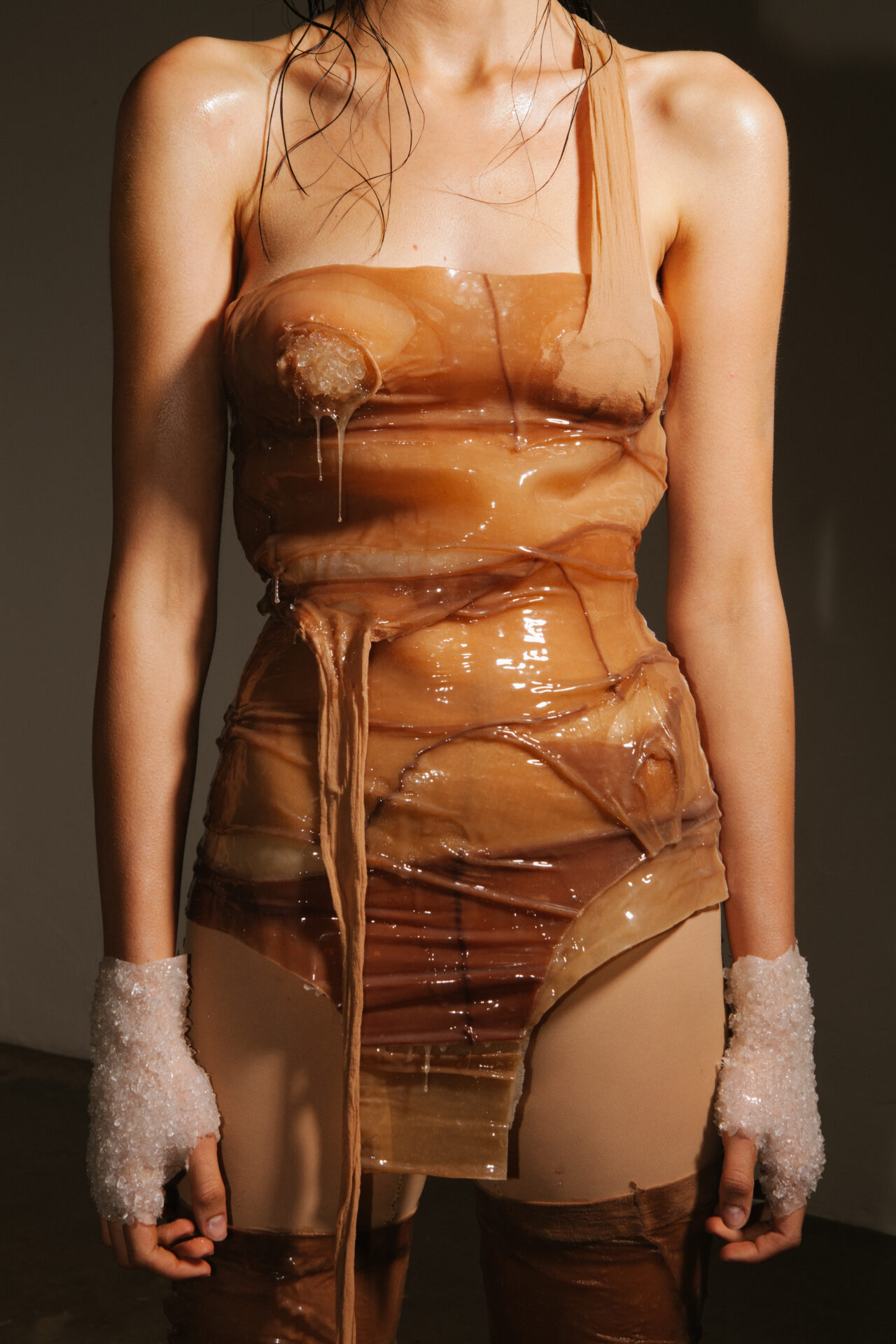
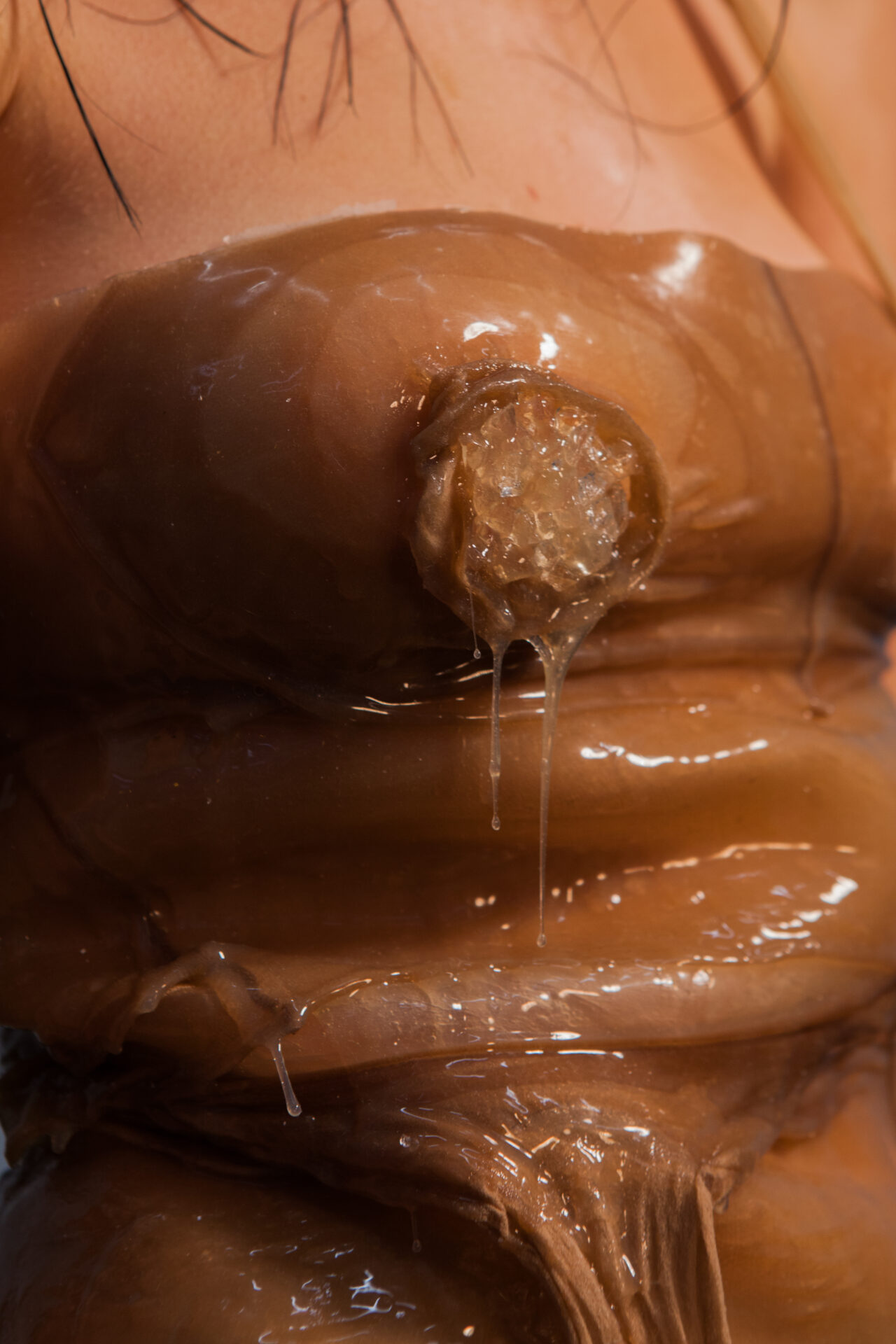
Can you introduce your latest collection Panic Buying?
‘Panic Buying’ came into life when the first lockdown in London took place and people started to panic. It was a time when suddenly we couldn’t live lives we used to live and we were all stuck at home. The only outdoor ‘attraction’ around me at that time was grocery shopping in local Sainsbury’s and watching people carrying their popular orange plastic bags. Seeing it as one of not many things I could observe during the beginning of lockdown made me start to experiment with melting plastic grocery bags and explore the creative potential of phenomena of panic buying. I continued my experimentation with other products that were stockpiled in that period such as: plastic product’s packaging, soap, toilet paper, aluminium cans and surgical face masks.
This collection aims to be a visual escape for mind and a body to a dream-like liquid world created from colourful melted mediums. A transition of materials related to a period of panic buying is a metaphor for positive change we seek for in difficult times.
Exaggerated organic shapes were inspired by the idea of contradiction between physical rest and discomfort of a body trapped at home setting.
PANIC BUYING COLLECTION


As a designer what is more important for you the process of the experimentation or final garment/collection?
Process of experimentation plays the most important part for me because it’s a space for learning and making mistakes which are crucial factors for improvement and invention.
I pay attention to final outcome as well but I never stay too attached to my drawings and I don’t allow myself to have a too clear vision of what I want to create. I allow the creative process to be spontaneous and accidental and see what outcome it will bring. Sometimes I’m not happy with an outcome but the journey is the most exciting part.

What changes in the industry have you been able to perceive since you started until now?
I started about 10 years ago and there have been many changes in fashion since then.
I can see that body perception has changed a lot and we do not longer see one ideal of body. Now fashion is becoming size inclusive and representing diversity in gender, race and disability.
The other thing that has changed is a higher invisibility of big brands, we know more about where garments are made, if people get paid fairly and there is an open discussion about sustainability and invisibility in fashion market.
Industry is concentrating on becoming more sustainable and universities play huge part in spreading awareness and changing unsustainable practices with their education programmes.
KUNST COLLECTION


Do you think the industry is finally moving forward after the pandemic?
After the pandemic fashion is moving faster towards digital platforms and it’s becoming more accessible. Brands are trying to be more sustainable and customers are more aware of that. However, when it comes to sustainability there is no other way to become more sustainable then by producing less and consuming less. So the biggest change in fashion is yet to come.

BIO / Joanna Prażmo is a London-based polish fashion designer. She graduated from Womenswear at London College of Fashion in 2019.
She is also educated as a sociologist and a pattern designer. Joanna completed a production internship with Norisol Ferrari in New York, USA, and another at the studio of independent Norwegian fashion designer Beate Godager in Copenhagen, Denmark, after which she moved from traditional pattern cutting and tailoring to casting and mould making.
Joanna’s work is inspired by art, philosophy, everyday-life stories and everyday objects. Her creative process involves experimental techniques and the transition of materials such as silicone, resin, found objects, and plastic into garments. The most important aspect of her creative work is to explore the potential of different mediums in the spontaneous process of creating.
CREDITS
Design of all collections / Joanna Prażmo
NASTY
Photographer: Marco Giuliano
Styling: Anca Macavei
Styling Assistant: Maria Vershinina
Model: Kira Alferink
Video: the same credits plus below
Video edit: Isabel Evangelisti
RHIZOME
Photographer: Kamil Kotarba
Model: Natalia Maj
Mua: Słavka Kościelniak
PANIC BUYING
Photographer: Jesse May Fisher
Model: Olaide Zainab
Mua: Akua Allen
Video:
Directed by: Jesse May Fisher
DoP: Donna Gage Wade
Music: Niomi
Model: Olaide Zainab
Mua: Akua Allen
KUNST
Photographer: Joanna Wierzbicka
Stylist: Hawko Liang
Model: Katie Hardwick
